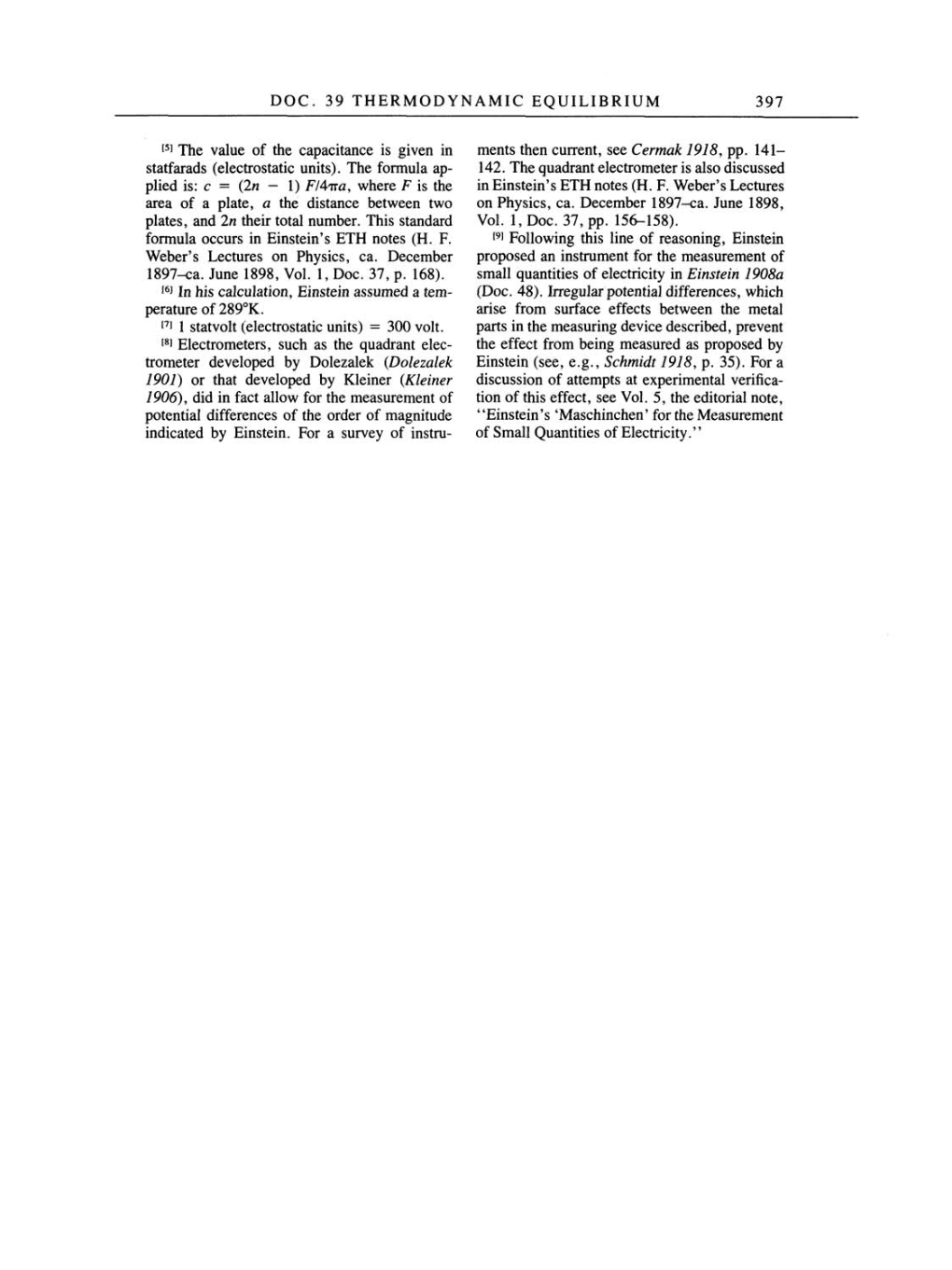DOC.
39 THERMODYNAMIC
EQUILIBRIUM 397
[5]
The value
of
the
capacitance
is
given
in
statfarads
(electrostatic units).
The formula
ap-
plied
is:
c
=
(2n
-
1)
F/4tta, where
F
is
the
area
of
a plate, a
the distance between two
plates,
and 2n their total number. This standard
formula
occurs
in
Einstein's
ETH notes
(H.
F.
Weber's
Lectures
on Physics,
ca.
December
1897-ca.
June
1898,
Vol.
1,
Doc.
37,
p.
168).
[6]
In his
calculation,
Einstein assumed
a
tem-
perature
of
289°K.
[7]
1
statvolt
(electrostatic units)
=
300 volt.
[8]
Electrometers, such
as
the
quadrant
elec-
trometer
developed by
Dolezalek
(Dolezalek
1901)
or
that
developed by
Kleiner
(Kleiner
1906),
did in fact allow for the
measurement
of
potential
differences
of
the order
of
magnitude
indicated
by
Einstein. For
a survey
of
instru-
ments
then current,
see
Cermak
1918,
pp.
141-
142.
The
quadrant
electrometer is also discussed
in
Einstein's
ETH
notes (H.
F.
Weber's
Lectures
on
Physics,
ca.
December
1897-ca.
June
1898,
Vol.
1,
Doc.
37,
pp.
156-158).
[9] Following
this line
of
reasoning,
Einstein
proposed an
instrument for the measurement of
small
quantities
of
electricity
in
Einstein
1908a
(Doc. 48). Irregular potential differences,
which
arise from surface effects between the metal
parts
in
the
measuring
device
described,
prevent
the effect from
being
measured
as proposed by
Einstein
(see, e.g.,
Schmidt
1918,
p.
35).
For
a
discussion
of
attempts
at
experimental
verifica-
tion
of
this effect,
see
Vol.
5,
the editorial
note,
"Einstein's 'Maschinchen' for
the Measurement
of
Small
Quantities
of
Electricity."
